Acquisitions
Specimens may be added to the Biodiversity Research and Teaching Collections by several means, including, but not limited to, the following:
- Donations of voucher specimens by researchers
- Exchanges or gifts from other institutions
- Gifts from private collectors
- Confiscations of specimens by law enforcement agencies
All acquisitions are subject to the approval of the Curators, and must be accompanied by proper collection documentation and permits. Specimens accessioned into the collections are made available to the research community for further investigation, and are maintained in perpetuity. If you would like to deposit your specimens with us, please contact the curator in charge of the appropriate division. Our full BRTC Policies and Procedures are here.
Loan Policy (BRTC-Loan-Policies)
All loan requests for specimens must be communicated in writing to the Curators. The loan request must be on institutional letterhead, and must state exactly which specimens are being requested as well as the purpose of the study. The request must also describe how the specimens will be handled and utilized. Requests from undergraduate or graduate students must be accompanied by the co-signature of their major professor. The borrower assumes full and complete responsibility for the handling and storage of borrowed specimens. Transfers of loans require written permission from a Curator. Loans are made to the Institution, not to the individual, and the receiving institution will be held responsible for the safe return of any borrowed specimens. In some cases, it may be desirable for the researcher to visit the Biodiversity Research and Teaching Collections in person, rather than to receive the specimens on loan. Most loans are granted for six months’ duration. Holotypes or paratypes are loaned only at the discretion of the curators, and if approved, are loaned for one month’s duration. Loan extensions may be granted upon written request, after evaluation on a case-by-case basis.
Consumptive or Destructive Use of Specimens (BRTC-Grant-Policies)
Some researchers such as molecular systematists, ecologists, anatomists, parasitologists, and paleontologists, consumptively use museum specimens. Consumptive sampling includes the removal of gonads and/or intestinal tracks to obtain parasites or data on food items dissection of specimens to reveal muscles and skeletal structure, or removal of tissues for DNA extraction. These activities must be carefully monitored because they may damage, and in some cases, destroy specimens. Permission to consumptively use specimens must be requested from the Curators in writing prior to the granting of the loan. Written applications for consumptive or destructive sampling must include justification for such sampling, and will be evaluated by the Curators and other appropriate staff. Any remaining material, left over from research resulting from consumptive or destructive sampling, such as DNA extractions, stomach contents, gonads, or skins, must be returned to the Biodiversity Research and Teaching Collections.
International Loans
International loans will be made at the discretion of the Curators, and may require written documentation of immunity from seizure and relevant permits regarding transport and receipt of specimens to and from the loanee’s country of origin. International loans will not be made without obtaining prior clearance for export from the USFWS Law Enforcement Division at the Designated Port of Entry/Export.
Acknowledgements
The BRTC should be acknowledged in any publications that result from the use of its specimens and/or data. Specimens examined for publications should be cited with the symbolic code TCWC followed by the appropriate specimen number (eg. Ammodramus henslowii TCWC 13,000) Acknowledgement should be given as “Biodiversity Research and Teaching Collections, Texas A&M University.” An electronic copy of each publication should be sent to the attention of the appropriate curator.
Collection Facilities Use
The Biodiversity Research and Teaching Collections are housed in a 22,500 sq. ft. facility, which it has occupied since 1993. The BRTC has space available for visiting professional and student researchers wishing to use the collection. Please contact the curator responsible for your area of interest prior to your visit. All visitors to the Collection must follow laboratory safety rules and regulations. Specimens or parts of specimens may not be removed from the BRTC without a written loan document, signed by a Curator. Specimens handled by visitors must be handled with utmost care, so that these valuable archival materials are not damaged or lost.

